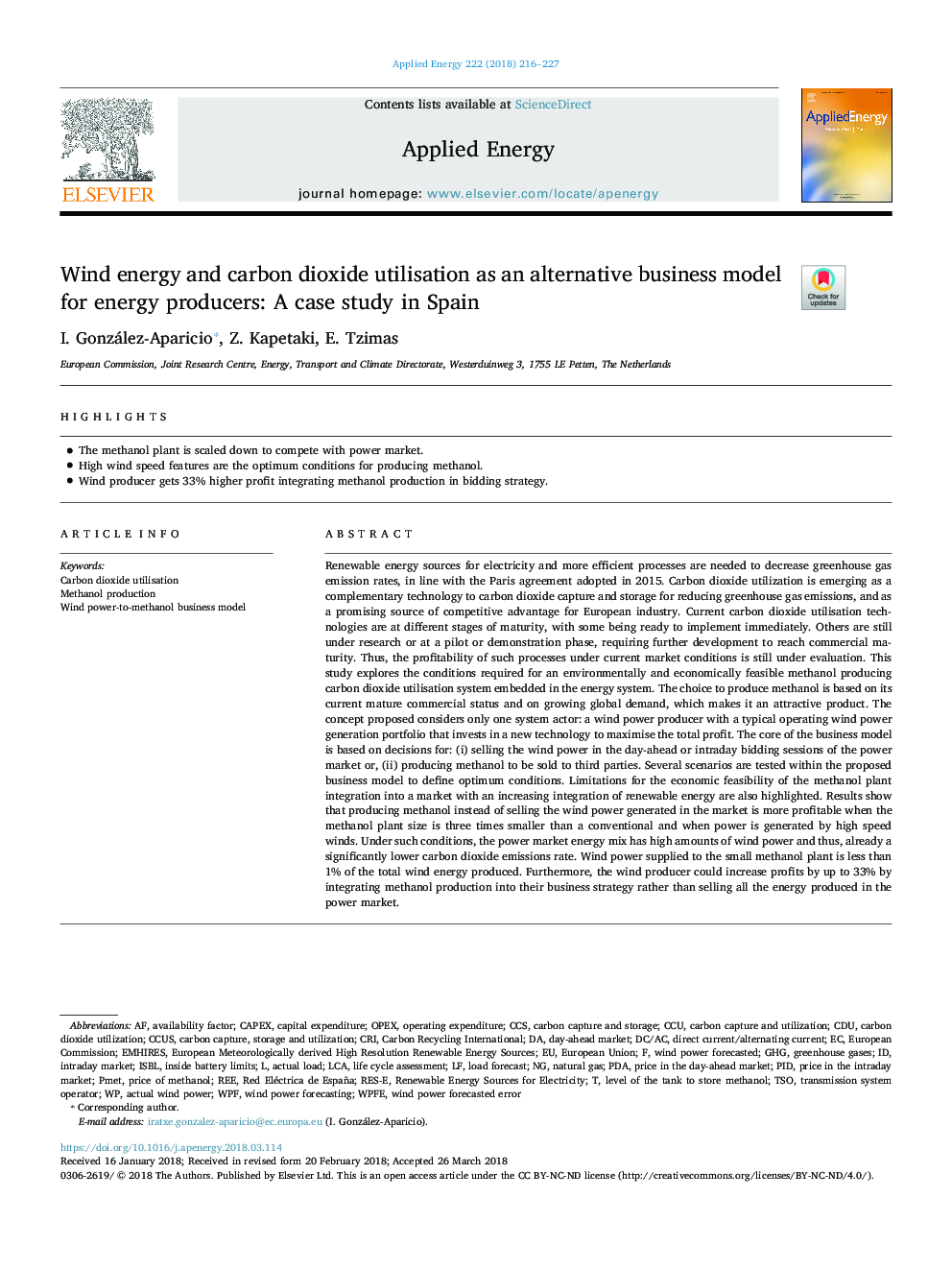| Article ID | Journal | Published Year | Pages | File Type |
|---|---|---|---|---|
| 6680086 | Applied Energy | 2018 | 12 Pages |
Abstract
Renewable energy sources for electricity and more efficient processes are needed to decrease greenhouse gas emission rates, in line with the Paris agreement adopted in 2015. Carbon dioxide utilization is emerging as a complementary technology to carbon dioxide capture and storage for reducing greenhouse gas emissions, and as a promising source of competitive advantage for European industry. Current carbon dioxide utilisation technologies are at different stages of maturity, with some being ready to implement immediately. Others are still under research or at a pilot or demonstration phase, requiring further development to reach commercial maturity. Thus, the profitability of such processes under current market conditions is still under evaluation. This study explores the conditions required for an environmentally and economically feasible methanol producing carbon dioxide utilisation system embedded in the energy system. The choice to produce methanol is based on its current mature commercial status and on growing global demand, which makes it an attractive product. The concept proposed considers only one system actor: a wind power producer with a typical operating wind power generation portfolio that invests in a new technology to maximise the total profit. The core of the business model is based on decisions for: (i) selling the wind power in the day-ahead or intraday bidding sessions of the power market or, (ii) producing methanol to be sold to third parties. Several scenarios are tested within the proposed business model to define optimum conditions. Limitations for the economic feasibility of the methanol plant integration into a market with an increasing integration of renewable energy are also highlighted. Results show that producing methanol instead of selling the wind power generated in the market is more profitable when the methanol plant size is three times smaller than a conventional and when power is generated by high speed winds. Under such conditions, the power market energy mix has high amounts of wind power and thus, already a significantly lower carbon dioxide emissions rate. Wind power supplied to the small methanol plant is less than 1% of the total wind energy produced. Furthermore, the wind producer could increase profits by up to 33% by integrating methanol production into their business strategy rather than selling all the energy produced in the power market.
Keywords
CCSPMETIntraday marketRES-EOPEXAvailability factorTSOwpfCDUREECRIPIDCCUSCAPEXGHGCCUPDAEuropean UnionLCALife Cycle AssessmentCarbon dioxide utilisationCarbon dioxide utilizationTransmission system operatorDay-ahead marketMethanol productionCarbon capture and storageCarbon capture and utilizationCapital expenditureoperating expenditureWind power forecastingLoad forecastEuropean CommissionNatural gasGreenhouse gases
Related Topics
Physical Sciences and Engineering
Energy
Energy Engineering and Power Technology
Authors
I. González-Aparicio, Z. Kapetaki, E. Tzimas,
